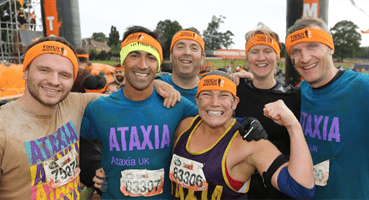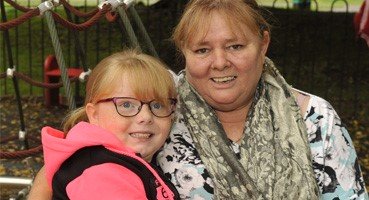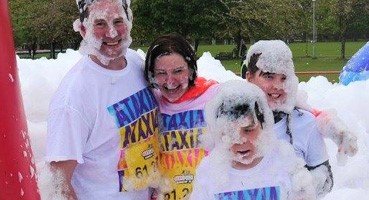Here is a snippet of Anamaria’s journey, she shared her story in support of the Rare Disease Day Campaign.
My adventure with this condition began at the age of 16, when I started to lose my balance and got a drunken gait. Over time, I lost my reflexes, my muscle strength began to decrease, and my muscles atrophied. The family doctor sent me to an ENT consultation and at the neurologist’s office, who, as soon as I entered the door and saw me walking and staggering, sent me to an MRI.
In 2000, I did the first MRI, which showed Spinocerebellar degeneration. After 3 years, I was diagnosed with Friederich’s ataxia. In Italy, back in 2007, there was an experimental treatment, and after a genetic test aimed for Friederich’s ataxia, it turned out to be a wrong diagnosis. After my second and third MRIs, I was diagnosed with Spinocerebellar ataxia sporadic form.
When I found out I was sick, I was in high school, 10th grade, I was treated differently, shunned by my colleagues, and that bothered me a lot. In 11th grade, I was told at the first admission to the hospital, that no one knows what I have, only that it is a condition that appears in adolescence and after puberty, and that I would get better. This was the moment when I realised that something was wrong with me.
It was quite difficult for me to go from being a perfectly healthy child to having walking and balance problems. But with all of this, I finished high school, and until the age of 21, I walked unaided. I started college. I went for a year and a half, until it started to be more and more difficult for me to walk alone and climb stairs without holding on to the railing. It was at that moment that I gave up college. I could no longer manage on my own, and I returned home. Little by little, I started to need support to be able to move, then needed to hold on with both hands. I currently use a wheelchair to get around, after a leg fracture. I can still stand, if I hold on to something firm, and to take a few more steps, I use a rollator and my mother supports me.
It was very difficult for me with the lack of information about the condition and I felt lonely because I didn’t know people with ataxia. It is very difficult for me to travel, especially long distances, because of the lack of accessibility and adapted means of transport. Another challenge is that I cannot find out more about the condition or where the type of ataxia comes from.
I currently benefit from the support of the Noro Centre, (Pilot Reference Centre for Rare Diseases), there is a group for young people and adults with disabilities. I go there for socialisation, physical therapy, psychological and social counselling, and many other therapies.
There were many difficult moments that I went through. Many moments in which, due to the fact that I move like a drunk person, had to endure. I got malicious looks and words from people on the street, and that really angered me, which then affected my walking/confidence. I felt devastated when I looked out the window and saw people walking around the city. However, once I accepted the situation, it was easier. I slowly started going out with other disabled people.
I agreed to go to a camp for people with disabilities — an experience that made me see the world differently. I knew a world where I was not a person with disabilities among normal people. This new experience was different because I was in a world without prejudice, where I was not looked at differently, and the most important thing was that I no longer felt alone. The wheelchair gave me a certain degree of independence and the chance to go from being an introverted person to being a little more sociable.






